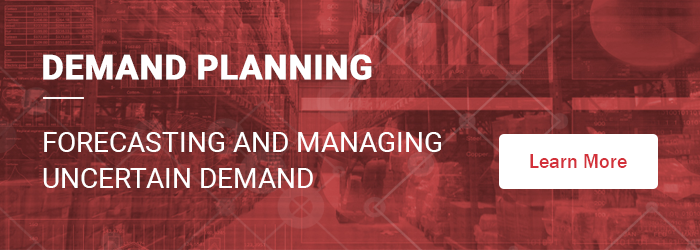Demand planning extends far beyond merely predicting product requirements; it’s about ensuring your business consistently meets customer expectations with precision, efficiency, and cost-effectiveness. The latest advancements in demand planning technology are addressing major challenges like improving forecast accuracy, optimizing inventory management, and increasing market responsiveness. In this article, we’ll explore seven pivotal demand planning trends that are shaping the future: data-driven insights, probabilistic forecasting, collaborative planning, predictive and prescriptive analytics, scenario modeling, real-time visibility, and multi-level forecasting. These trends will not only keep you ahead of industry developments but also help you refine your supply chain, cut costs, and boost customer satisfaction, paving the way for long-term success. Data-Driven Insights Advanced analytics, machine learning, and artificial intelligence (AI) are now central to demand planning. Solutions like Smart UP&O empower businesses to analyze intricate datasets, uncover hidden patterns, and make more precise predictions. This shift toward data-driven insights allows companies to swiftly adapt to market shifts, minimizing stockouts and reducing excess inventory. Probabilistic Forecasting Probabilistic forecasting focuses on projecting a range of possible outcomes instead of a single number. This trend is especially relevant for managing uncertainty and risk in demand planning. It helps businesses prepare for multiple demand scenarios, improving inventory management and reducing the chances of stockouts or overstocking. Collaborative Planning The modern manufacturing landscape is evolving toward greater integration, where departments and stakeholders work more closely together. Collaborative forecasting involves sharing insights across the supply chain, from suppliers to distributors and internal teams. This approach breaks down silos and aligns everyone toward a shared objective, resulting in a more coordinated and efficient supply chain. Predictive and Prescriptive Analytics Predictive analytics uses historical data and trends to forecast future outcomes, helping businesses anticipate demand fluctuations. For instance, Smart Demand Planner (SDP) automates forecasting to adjust inventory and production levels accordingly. Prescriptive analytics takes it a step further by offering actionable recommendations. Tools like Smart Inventory Planning and Optimization (IP&O) prescribe optimal inventory policies based on service levels, costs, and risks. Together, these tools enable proactive decision-making, allowing companies to both predict and optimize their responses to future challenges. Scenario Modeling Scenario modeling is becoming a cornerstone of demand planning, enabling businesses to simulate different situations and evaluate their impact on operations. This method helps companies develop adaptable strategies to manage uncertainties effectively. Smart IP&O enhances this capability by offering What If Scenarios, allowing users to test various inventory policies before implementation. By adjusting variables like service levels or order quantities, businesses can visualize the effects on costs and service levels, empowering them to choose the best strategy for minimizing risks and controlling costs. Real-Time Visibility As supply chains grow more global and interconnected, having real-time visibility into inventory and supply chain activities becomes essential. Enhanced collaboration with suppliers and distributors, coupled with real-time data, enables businesses to make faster, better-informed decisions. This helps optimize inventory levels, shorten lead times, and strengthen overall supply chain resilience. Multi-Level Forecasting This involves forecasting at various levels of the product hierarchy, such as individual items, product families, or entire product lines. Multi-level forecasting is crucial for businesses with complex product portfolios, ensuring accuracy at both the micro and macro levels.  Demand planning is a critical component of modern supply chain management, offering businesses the ability to improve operational efficiency, reduce costs, and better meet customer needs. Leveraging advanced platforms like Smart IP&O significantly enhances forecasting accuracy and inventory management, enabling quick responses to market changes. Automated statistical forecasting, along with features like hierarchical forecasting and forecast overrides, ensures forecasts are accurate and flexible, leading to more realistic planning decisions. Additionally, tools like scenario modeling allow businesses to explore various demand scenarios across their product hierarchy, providing insights into potential outcomes and risks. This approach empowers businesses to anticipate the impact of policy changes, make smarter decisions, and ultimately optimize their inventory and overall supply chain management, staying ahead of key trends in the process.    Vacuum Sewer Truck,Vacuum Truck Sewer Cleaning,Vacuum Pump For Sewer Truck,Sewer Vacuum Trucks Kaili Special Automobile Co., Ltd , https://www.kailiwei.co.ke
